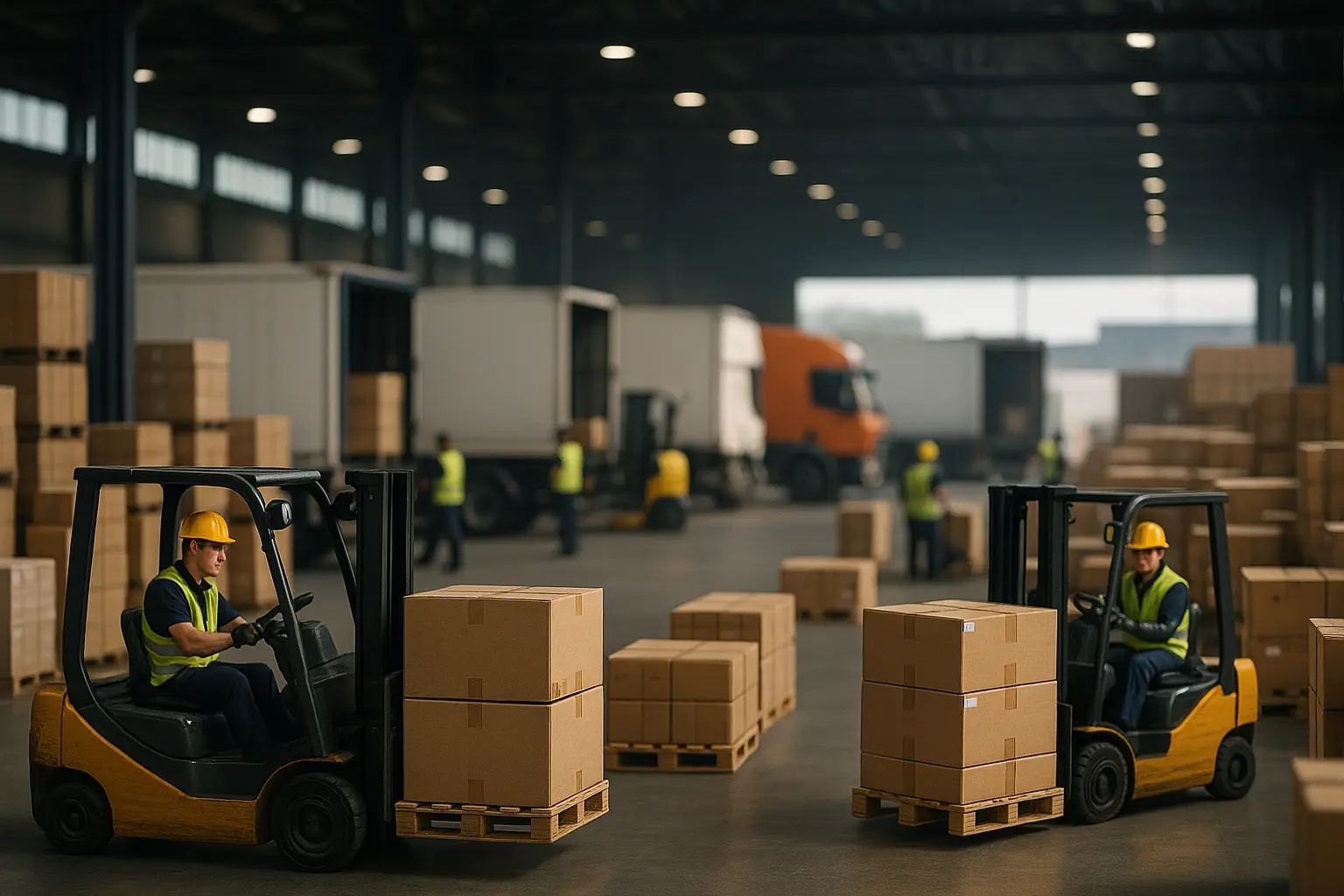Supply chain resilience: lessons learned from global disruptions
In today’s interconnected world, supply chain disruptions have become increasingly common, often creating significant challenges for businesses. We’ve witnessed numerous instances where our global supply chains have failed to deliver, leaving companies scrambling to adapt. As we navigate these disruptions, building resilience and implementing effective risk management strategies have become critical priorities for companies worldwide.
The past few years have painted a vivid picture of how fragile our supply chains can be. From natural disasters to geopolitical tensions, the global business environment demands that we make strategic adjustments to stay ahead. In this article, we explore the key lessons learned from these disruptions and how companies can fortify themselves against future challenges.
Understanding Supply Chain Disruptions
supply chain disruptions manifest in numerous ways, often leaving a profound impact on how businesses operate. From natural calamities to geopolitical upheaval, the vulnerabilities in our supply chains have been laid bare. To ensure continuity, it’s imperative that we understand the various types of disruptions and their underlying causes.
Natural and Man-made Disruptions
Natural disasters such as hurricanes, earthquakes, and floods can devastate production facilities, leading to inventory shortages and delivery delays. Meanwhile, human-induced disruptions like cyberattacks or labor strikes can halt operations just as swiftly. Both scenarios highlight the necessity for businesses to develop robust contingency plans.
Economic and Geopolitical Impact
In the last five years, economic instability and geopolitical tensions have further complicated our supply chains. Trade wars, tariffs, and sanctions disrupt global trade flows, forcing companies to reassess their supplier networks and production strategies.
The Domino Effect
One disruption in the supply chain can trigger a cascading effect, impacting every stage from production to delivery. The COVID-19 pandemic is a stark reminder of how quickly things can spiral when demand shifts dramatically overnight.
Identifying the root causes of each disruption and understanding their interconnections is the first step toward building more resilient supply chains.
Building Resilience in Supply Chains
As we look to the future, building resilience within our supply chains is no longer optional—it is essential. This involves adopting innovative strategies that allow businesses to anticipate disruptions and react swiftly.
Embracing Technological Solutions
technology, particularly data analytics, plays an instrumental role in enhancing supply chain resilience. By analyzing vast amounts of data, businesses can forecast potential disruptions and make informed decisions. Technologies like AI and IoT provide real-time insights into inventory levels, enabling proactive adjustments.
Diversifying Supplier Networks
Relying on a single supplier or geographical area increases vulnerability. Diversifying suppliers across different regions spreads risk and ensures that if one supplier faces a disruption, alternatives are available to maintain business continuity.
Collaborative Partnerships
Building strong relationships with suppliers and other stakeholders fosters collaboration and mutual understanding. Open lines of communication ensure that all parties are aligned in their risk management strategies, allowing for coordinated responses when disruptions occur.
By implementing these strategies, businesses can enhance their resilience, ensuring they are better equipped to withstand future supply chain challenges.
Risk Management Strategies for Modern Businesses
Effective risk management is the cornerstone of supply chain resilience. By understanding potential risks and developing strategies to mitigate them, companies can protect themselves from unforeseen challenges.
Proactive Risk Assessment
We must regularly assess the risks associated with our supply chains. This involves evaluating everything from political stability in supplier countries to the reliability of shipping routes. Creating a comprehensive risk profile enables businesses to develop targeted responses.
Inventory Management and Flexibility
Inventory levels can either be a buffer or a burden during disruptions. Maintaining just-in-time inventory minimizes costs but can leave companies vulnerable to sudden changes in demand. Striking a balance between lean inventory and safety stocks provides the necessary flexibility.
Scenario Planning and Simulation
Simulating various disruption scenarios allows us to test our contingency plans in advance. By understanding how different disruptions could unfold, we can refine our responses and ensure that we are prepared for a range of possibilities.
Through diligent risk management, businesses can proactively safeguard against future supply chain disruptions, fostering a culture of preparedness.
The Future of Supply Chain Resilience
As we move forward, the future of supply chain resilience will be shaped by innovative technologies and evolving business models. Businesses must remain agile, continuously adapting to changing circumstances and leveraging new advancements.
Integrating Emerging Technologies
Emerging technologies such as blockchain and digital twins offer businesses a new level of transparency and traceability in their supply chains. Blockchain provides an immutable record of transactions, ensuring trust and accountability. Meanwhile, digital twins enable real-time modeling of supply chain operations, facilitating predictive decision-making.
Emphasizing Sustainability
Sustainability is becoming an integral part of supply chain strategies. By adopting eco-friendly practices, businesses can reduce their carbon footprint and contribute to a more sustainable future. Sustainable supply chains are not only ethical but often more resilient to external shocks.
Cultivating a Culture of Innovation
Fostering a culture that embraces innovation and flexibility is crucial. Encouraging employees to think creatively and experiment with new approaches ensures that businesses remain competitive and resilient in the face of disruptions.
The future of supply chains is bright, promising a fusion of traditional practices with cutting-edge innovations that will redefine resilience.
In the ever-evolving landscape of global commerce, supply chain resilience is the linchpin that will determine our success. Embracing technology, diversifying supplier relationships, and implementing robust risk management strategies will fortify our supply chains against future disruptions.
As we harness these lessons learned from past challenges, we stand at the cusp of a new dawn in supply chain management, where innovation and collaboration pave the way for a resilient and sustainable future.
By prioritizing resilience and adopting forward-thinking strategies, we equip ourselves to navigate the complexities of the modern world, ensuring our businesses thrive amid uncertainty. This journey toward resilience is not just a necessity—it’s an opportunity for growth and transformation.
FAQ
How do global disruptions impact supply chains?
Global disruptions, such as pandemics or natural disasters, can cause significant delays in production and distribution. These events often lead to shortages of raw materials, increased transportation costs, and longer lead times, affecting the overall efficiency and reliability of supply chains.
What strategies can businesses adopt to enhance supply chain resilience?
Businesses can enhance supply chain resilience by diversifying their supplier base, investing in technology for better visibility, maintaining strategic stockpiles of essential materials, and developing flexible logistics strategies to adapt to unexpected changes.
Why is it important for companies to have a diverse supplier network?
A diverse supplier network reduces dependency on a single source, which mitigates risks associated with supplier disruptions. By having multiple suppliers, companies can quickly adjust to changes and maintain continuity of operations even if one supplier faces a setback.
How does technology play a role in strengthening supply chain resilience?
Technology enhances supply chain resilience by providing real-time data analytics, improving communication across the network, and enabling predictive modeling to anticipate disruptions. Tools like blockchain and IoT can also offer greater transparency and traceability throughout the supply chain.
What lessons have been learned from recent global disruptions regarding supply chains?
Recent disruptions have highlighted the need for agility, the importance of digital transformation, and the value of collaboration across sectors. Companies have learned the necessity of proactive risk management and the benefits of building more robust contingency plans to handle future challenges effectively.














Post Comment